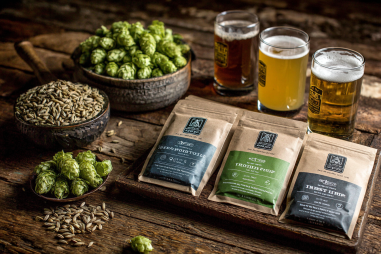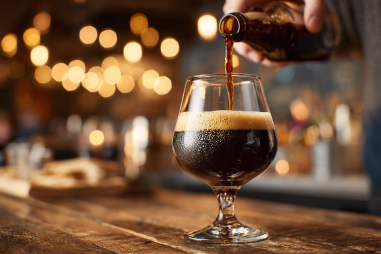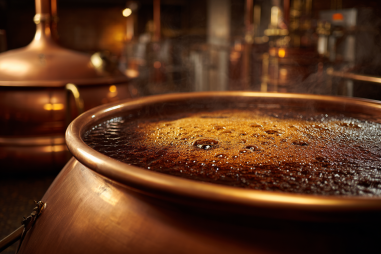Czech amber lager, often admired for its balanced maltiness and rich amber color, represents a unique and time-honored brewing tradition. Whether you’re a homebrewer eager to recreate this classic beer style or a craft brewer looking for inspiration, understanding the detailed brewing process is key. This guide will take you through each step, from ingredient selection to the final pour, highlighting the techniques that bring out the distinct character of Czech amber lager.
Overview of Czech Amber Lager Style
Czech amber lager, also known as “Polotmavý Ležák,” is a beloved style in the Czech Republic, characterized by a harmonious blend of malt sweetness, moderate hop bitterness, and a deep amber hue. It sits between the lighter pale lagers and darker robust beers, offering drinkability alongside a complex malt profile. This beer style typically features a smooth body, caramel and biscuit malt notes, subtle to medium bitterness, and a clean yeast character that balances the flavor.
The style’s origins trace back to the brewing traditions of Bohemia, where emphasis was placed on using carefully selected ingredients and traditional methods to create beers with both flavor depth and clarity. The process prioritizes slow fermentation and maturation, lending the beer its signature smoothness and balanced taste.
Key Ingredients: Malts, Hops, Yeast, and Water
The foundation of any great Czech amber lager lies in its ingredients, each playing a vital role in the beer’s flavor, color, and aroma.
- Malts: The malt bill for a Czech amber lager relies heavily on Czech pale malt (often referred to as Pilsner malt) combined with specialty malts such as caramel (carared or caramel malt) and sometimes Munich malt. These specialty malts provide the amber color and contribute rich caramel, toffee, and biscuit flavors essential to the style.
- Hops: Traditional Czech Saaz hops are used for their mild, earthy, and floral characteristics. These hops deliver a gentle bitterness and aromatic quality that balances the malt sweetness without overpowering it.
- Yeast: Czech lager yeast strains are essential for producing the clean, slightly fruity esters typical of the style. The yeast ferments at cooler temperatures, slowly converting sugars into alcohol and carbon dioxide while maintaining a crisp finish.
- Water: Water chemistry is important in Czech brewing, with the local water being soft and low in mineral content, which complements the delicate hop profile and malt flavors. Adjusting water chemistry to mimic this profile can significantly improve the brewing outcome.
Mash and Lautering Techniques Unique to Amber Lager
One of the defining steps in crafting Czech amber lager is the mashing process, which involves extraction of malt sugars while developing the beer’s body and flavor.
The mash typically employs a decoction method, a traditional Czech technique that involves removing a portion of the mash, boiling it, then returning it to the main mash. This process raises the temperature gradually, enhances malt complexity, and contributes to the deep amber color and rich flavor.
Here’s how the mash is generally executed:
- Mash-in: Malt grist is combined with water at around 45-50°C (113-122°F) to initiate enzymatic activity.
- Protein rest: The temperature is held at about 50-55°C (122-131°F) to break down proteins and improve clarity.
- Decoction boil: A portion of the thick mash is removed and boiled separately, developing melanoidins that deepen color and flavor.
- Temperature ramp: The boiled portion is returned to the mash, raising the temperature to about 65-67°C (149-153°F) for beta-amylase activity to create fermentable sugars and then to about 72°C (162°F) for alpha-amylase activity for dextrins and body.
- Lautering: After mashing, the grist is separated from the sweet wort by lautering. It is important to avoid compacting the grain bed to ensure efficient extraction without extracting unwanted tannins.
Fermentation Process Specifics for Czech Amber Lager
Fermentation of Czech amber lager is a carefully managed stage that greatly influences the flavor profile and clarity of the finished beer.
- Yeast pitching: The clean, lager yeast strain is pitched at a relatively low temperature, around 8-12°C (46-54°F).
- Primary fermentation: This step usually takes between one to two weeks. The slow fermentation helps preserve the delicate malt and hop flavors while producing the characteristic smoothness. Temperature control is critical here to avoid off-flavors.
- Diacetyl rest: Near the end of fermentation, the temperature may be raised slightly to allow the yeast to reduce diacetyl, a compound that can give a buttery off-flavor.
The clean and crisp profile of Czech amber lager is largely thanks to extended fermentation at low temperatures, allowing for slow flavor development and removal of unwanted compounds.
Conditioning and Maturation
Once fermentation completes, maturation is the final phase where the beer truly develops its smoothness and clarity. Czech amber lagers undergo an extended cold conditioning, also known as lagering, typically lasting 4-8 weeks at temperatures between 0-4°C (32-39°F).
This stage enables:
- Rounding out of flavors and reduction of harshness
- Clarification through sedimentation of yeast and proteins
- Carbonation stabilization
The result is a well-rounded beer with a silky mouthfeel, bright amber color, and a harmonious balance of malt sweetness and hop bitterness.
Packaging and Serving Tips
Packaging Czech amber lager properly helps preserve its flavor and carbonation. Whether bottled or kegged, it’s important to minimize oxygen exposure to prevent staling.
- Bottling: Use priming sugar to naturally carbonate in the bottle. Ensure proper sanitation and avoid oxygen during filling.
- Kegging: Carbonate using forced CO2 at safe pressures for the style.
Serving Czech amber lager at the right temperature enhances its flavor. Serve chilled, around 7-10°C (45-50°F), to allow malt sweetness and hop aroma to shine through without dulling the palate. Use a tulip or traditional lager glass to concentrate aromas and showcase its beautiful amber color.
Bringing Czech Amber Lager Brewing Home or Commercially
Brewing a perfect Czech amber lager is both an art and science—combining traditional techniques with careful attention to detail. Whether brewing at home or commercially, following the outlined process presents a solid foundation:
- Select high-quality traditional ingredients emphasizing Czech malts and Saaz hops.
- Employ decoction mashing to develop malt complexity and color.
- Maintain precise fermentation temperature controls for clean yeast expression.
- Allow ample maturation for smoothness and clarity.
Experimenting with mashing schedules, yeast strains, and water chemistry can help refine the profile to your taste. Ultimately, the reward is a beautifully balanced amber lager that honors the rich Czech heritage while delighting modern palates.







